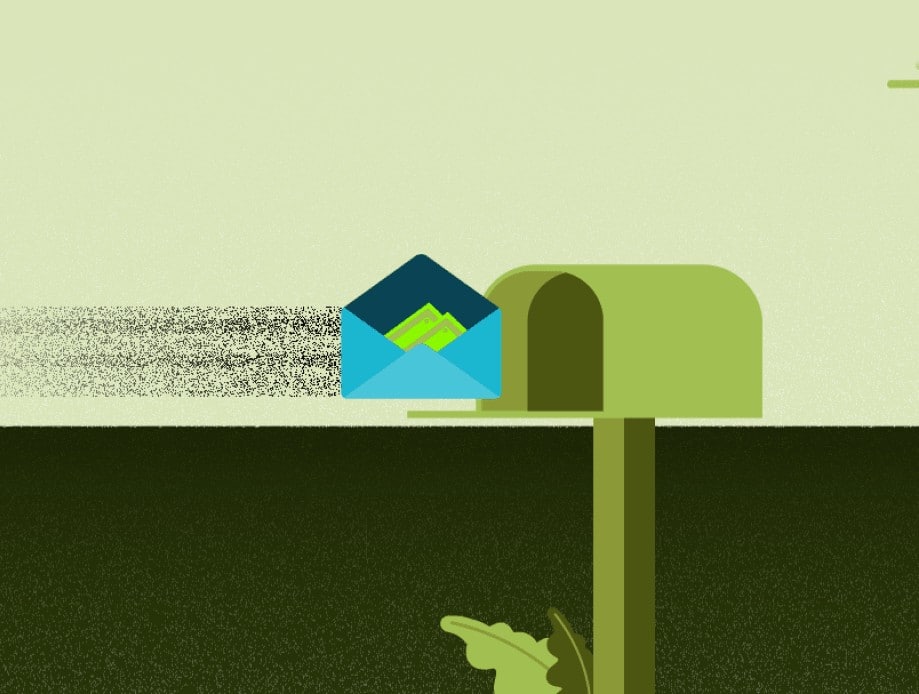Having an Email Marketing strategy today is not a question of if but how.
It is a channel used by 3.9 billion people and can give a business an incredible return for little investment.
But is there a right recipe for the strategy? Can you use some tips to help you build your plan? That is exactly what this post will show you.
Let’s discuss the steps and examples you need to understand about what needs to be done, what can’t be, and where to start with the following topics:
- The importance of investing in the right recipe
- The Do’s and Don’ts of an Email Marketing recipe
- The web is a marketplace and you need fresh content
The importance of investing in the right recipe
The market was so flooded by email marketing strategies in recent years that many of us think of it as an annoyance or even spam.
But just like it’s edible namesake, email spam conjures images of bland, prepackaged, low-effort food.
That does not mean that the same ingredients couldn’t be used for fresh, interesting, and complex recipes that attract and satisfy a customer.
The same resurgence of a slow food tradition (valuing good recipes, processes, and attention to the ingredients used) is happening with Email Marketing.
Businesses finally understand that using the channel is not just about the automation of robotic messages and aimless communication. It is possible to give a different and customized flavor based on each lead and their tastes.
Instead of eliminating email from the Content Marketing toolkit, brands just need to dust it off and refresh their approach.
If marketers stop using email campaigns to broadcast information and start using it as a form of personalized real-time engagement, they can harness the power of this “data-driven, customer-focused” form.
The Do’s and Don’ts of an Email Marketing recipe
How do you integrate email marketing into your content plan without becoming just another piece of bland food in your audience’s inbox?
If we think of the CMO as a chef in a restaurant, they will have to find their own, unique recipes. Each will consider the brand’s identity, values, and a menu that fits them.
They will also need to understand what the clients’ expectations are and what really moves them towards conversion, brand loyalty, and being promoters.
At last, of course, the ingredients and the kitchen. A CMO needs to invest in the right tools and the right material to produce the most engaging and flavorful email strategy they can.
To help you layout this plan, we’ve compiled the most important do’s and don’ts to create the best email marketing recipe for your Content Marketing strategy.
The Do’s: The Best Ingredients For Fresh Email Marketing Content
1. Find the right tools for you
Email marketing is cheap to do, but it requires a lot of planning, mostly because of automation. This means that low performance and high complexity in setting up your execution will only bring subpar results.
A great email marketing plan requires a platform to collect data about leads and customers, manage addresses, create triggers, personalize messages.
You need the flexibility to do customization on a per-email basis while you quantify and analyze huge volumes of messages sent.
An email marketing service is a must-have for your strategy. Search the market for those that rely a lot on cloud computing and automation to ease your job.
You can even search for specialized partnerships to help you with everything else.
2. Make Subscribing Worth It
“People who subscribe to your email list are so into you that they’ve given you permission to their inboxes,” observes MailChimp.
This popular email marketing service provider recommends honoring loyal viewers by allowing them to be the first to know about new products and sales, or by giving them access to special events and exclusive giveaways.
Emails can pile up quickly, and if your content isn’t useful, it’s only a click away from the trash can. Make sure that your content is always fresh and carefully curated!
3. Personalize
Social Media is here for more than a decade now, but most brands are only now correctly working with its potential for customizing and segmenting ads.
Email is a lot more mature and ready for that kind of communication. It is actually a great way to build customer profiles and cater to personalized content for your audience.
In this new age of email, brands need to stop sending out large email blasts and start concentrating on using the form to make emails specific to each viewer’s habits and preferences.
Once you start talking to the individual instead of the crowd, you can begin crafting and nurturing relationships — an essential component in the modern sales cycle.
According to AdWeek, “email holds more keys to personalized marketing (than other social media channels), especially since an email address can be linked to a myriad of other data, like shopping preferences.”
With the right tech, this medium can be an incredibly valuable tool (and time-saver) for marketers looking to customize content, develop customer profiles, and better understand their audience.
Some email platforms even allow marketers to integrate their email system with the CRM to transfer data and build customer profiles seamlessly.
Keeping all this data organized will help marketing departments position future email campaigns and better understand when a viewer becomes a potential lead.
4. Experiment With Timing
Sometimes the best recipes have the fewest ingredients. When too many flavors are competing in a dish, it can be overwhelming instead of delicious. The same ‘less is more’ logic applies to email marketing.
In email marketing, timing is everything. If you’re ramping up for an event, well-timed emails can help boost registration and create excitement around the event.
However, it’s important to stick to the expectations you set when gaining permission to email your viewers. Try not to overwhelm your audience with information, offers, or reminder messages devoid of fresh content.
Instead, take a more reserved approach and experiment with each email’s timing until you strike the right balance with your audience. Setting up the right triggers (based on time and actions) are a large part of your success.
5. Create a strong call to action
Create and integrate a clear call to action in each email. One that is contextualized, interesting, and doesn’t taste like industrialized food.
Instead of using the phrase “Click Here” to direct readers to your landing page, MOZ recommends trying more specific phrases such as “start referring your friends” or “shop more styles.”
Though you may have to test several phrases to determine what generates the most click-throughs for your content, the result will be much more compelling and generate higher volumes of traffic to your landing pages.
You can also ensure that your emails don’t head straight to the spam box by getting whitelisted.
According to MailChimp, the best way to achieve whitelist status is to include a small request to be added to a subscriber’s address book on both subscription and thank you pages.
The Don’ts: How To Avoid Spoiling Your Audience’s Appetite
Now that you’ve got the ingredients for a great email marketing campaign, it’s time for a few reminders on what not to do when putting together an email campaign.
1. Do Not Spam
This cannot be stressed enough. Timing is everything, and if your emails start to become too frequent or intrusive, they’re only one click away from the spam folder.
Spam is such a pervasive problem that both the US and Canada have passed anti-spam legislation to keep inboxes lean and clean.
Canada’s anti-spam legislation (CASL) came into effect in 2014 to protect Canadians from unsolicited commercial electronic messages: “unauthorized alteration of transmission data, the installation of computer programs without consent, false or misleading electronic representations (including websites), the unauthorized collection of electronic addresses and the collection of personal information.”
In the US, the CAN-SPAM act sets the guidelines for commercial email and provides similar protection for American citizens. The takeaway is that spamming is a serious business and can land you a hefty fine.
Fortunately, many email accounts have built-in spam filters that catch emails with specific trigger words like:
- “fast cash”;
- “no-cost”;
- “meet singles”;
- “click here”;
- “congratulations”;
- “great offer”;
- “don’t hesitate”;
- “limited time”;
- “offer expires”;
- “apply now”.
Familiarize yourself with these terms, so your carefully crafted emails don’t end up in the spam folder. Then you guarantee your message reaches its destination.
The good news is email marketing stopped being perceived as spam exactly because of good practices in the business. So if your message is well crafted and useful, it will find an inbox and will be opened.
2. Do Not Forget the 3 Requirements
In Canada, a commercial electronic message (CEM) must comply with 3 requirements:
- senders must obtain consent;
- provide identification information;
- give recipients an unsubscribe mechanism.
Make sure your emails are adhering to all 3 requirements, especially the unsubscribe button.
Even if an individual decides to abstain from receiving regular emails, creating a painless unsubscribe process can help preserve a positive reputation with the consumer.
3. Do Not Create Deceptive Subject Lines
It’s important not to abuse your audience’s trust. If they’ve taken the time to open your email, your content must reflect the subject line and add real value.
Imagine browsing a menu in a restaurant and ordering a meal based on ingredients you like. Then it comes, and it has nothing to do with what you asked. Would you come back?
Content Marketing depends on building strong relationships with your consumers, so don’t make false promises or exaggerate your subject lines.
Instead, spend some time crafting a compelling call to action. Give it the same attention you would give any Tweet or blog title.
The web is a marketplace and you need fresh content
Now that you’re familiar with the basics of email marketing, it’s time to see who’s doing it best. We’ve gathered our favorite examples of brands that are getting creative with their email marketing.
If you’re just getting started or need to revamp an old email strategy, these cutting edge brands will provide some inspiration.
The Hustle

How can a newsletter with only news inspire your email marketing campaign?
The Hustle shows us is how a business can test subject lines to find those that speak more with the audience and lead to more engagement.
Their A/B testing is clean and objective, testing more traditional headlines and creative ones to find a good balance that quickly captures the leads’ attention.
Airbnb

What Airbnb shows us is how automation can be used to personalize email marketing and inspire leads to action. After all, a company that profits from travel needs to predict where their audience is going on vacation.
That is why they use a lot of substitution tags to speak directly to each lead and offer them relevant suggestions based on their data.
This customization starts with the subject, which calls a lot of immediate attention — as it resembles a conversation. Then it approaches the body of the content with a more intimate, friendly tone.
Vans

As a virtual store, Vans shows one of the most powerful things you can do with email marketing today: recover abandoned carts and convert more sales from the same pool of leads.
When someone puts a product in a cart but doesn’t buy it, it is a huge missed opportunity. A lead ready to be converted that pulled out in the last step before conversion.
What Vans does right is that they never approach that person just to ask them to come back. It feels pushy and intrusive.
Instead, they use automation to enrich the email with suggestions of similar models, accessories, and other products in the same category.
So they not only bring a lost customer back but also increase the chance of raising a sale’s ticket. When you add customization and context, you always get your audience’s attention.
In our analogy, it is the same as inspiring food. The best recipe is not universal. You have to find the ingredients your buyer persona likes the most and test many different processes, tools, and seasoning.
The Do’s and Don’ts of Email Marketing can be summarized exactly like that: be personal and have a frequent presence to be remembered, but never too fabricated to push your leads away.
And if frequency and planning are a great part of Email Marketing, how about having a smart schedule to help you layout your content publishing? Download for free our email marketing calendar template!








